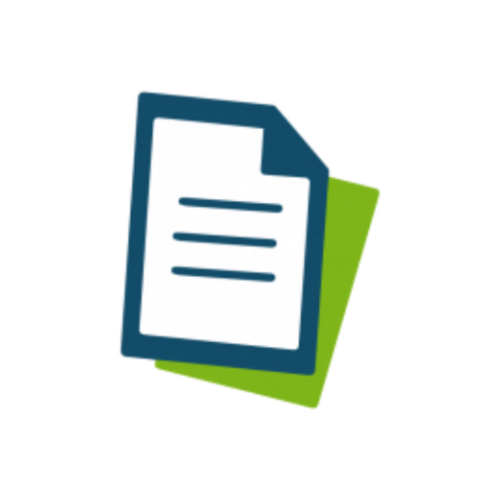Blog > Treatment Strategies > Self-Harm Treatment Plan: Interventions & Goals
Creating a Self-Harm Treatment Plan: Interventions and Goals That Support Healing and Safety
A self harm treatment plan outlines assessment findings, measurable goals, and evidence-based interventions that help clients manage distress safely. Effective treatment plan goals focus on harm reduction, emotional regulation, and building coping skills through approaches like DBT, CBT, and ACT — supporting both client safety and long-term recovery.

Last Updated: October 13, 2025


What You'll Learn
- Conduct comprehensive assessments that uncover the function and motivation behind self-harm.
- Develop measurable self harm treatment plan goals that promote safety, emotional regulation, and collaboration.
- Apply evidence-based self harm interventions drawn from DBT, CBT, and ACT frameworks.
- Incorporate harm-reduction and safety-planning tools such as the NSSI Bill of Rights, choice-point exercises, and urge surfing.
- Engage family and support systems to reduce shame, secrecy, and stigma.
- Use documentation strategies that keep treatment notes clear, compliant, and defensible.
- Leverage ICANotes to streamline treatment planning, note writing, and outcome tracking for clients who self-harm.
Contents
- Conducting a Comprehensive Self-Harm Assessment
- Setting Self-Harm Treatment Plan Goals
- Evidence-Based Self-Harm Interventions
- Addressing Shame and Building Support Networks
- Monitoring Progress and Adjusting the Treatment Plan
- Helping Clients Move Toward Hope and Recovery
- FAQ: Self-Harm Treatment Planning for Clinicians
- How ICANotes Supports Clinicians in Self-Harm Treatment Planning
Working with clients who engage in self-harm can leave even experienced clinicians uncertain about how to respond. Effective treatment begins with understanding that nonsuicidal self-injury (NSSI) is often not a desire to die, but a way to manage overwhelming emotions or communicate internal pain. A well-structured self-harm treatment plan helps clinicians bring clarity, compassion, and direction to care. It defines measurable treatment plan goals, establishes safety protocols, and identifies evidence-based self-harm interventions that reduce risk while building coping capacity.
This guide walks through every stage of the process—from assessment and goal-setting to practical interventions drawn from DBT, CBT, and harm-reduction frameworks. You’ll also find sample documentation language and collaborative tools, including the NSSI Bill of Rights and safety plan templates. Together, these approaches help clinicians create treatment plans that honor client autonomy, reduce shame, and support sustainable recovery.
Understanding Self Harm and Its Function
Before creating an effective self-harm treatment plan, clinicians must understand what drives self-injurious behavior. Most clients who engage in self-harm are not attempting suicide; rather, they’re using physical pain to interrupt emotional pain, regain control, or feel something when emotions are otherwise numbed. Nonsuicidal self-injury (NSSI) can serve as a temporary form of emotion regulation or self-punishment, but over time, it often becomes an entrenched coping mechanism that reinforces shame and secrecy.
For many clients, especially adolescents, social media and peer exposure can normalize self-harm, turning it into a learned strategy for coping with distress. Others may turn to it after trauma, rejection, or experiences of invalidation. Understanding these patterns helps clinicians identify triggers, motivations, and the specific function self-harm serves for each client.
Alyssa, a young woman who struggles with self-harm, shares "Every time I did [cut myself], it seemed to make me feel better. I don't know why really I guess it was a bit of a relief, so I kept doing it." This highlights the immediate, albeit temporary, relief that self-harm can provide, reinforcing the behavior.
Current Statistics and Prevalence Trends
The prevalence of self-harm is a significant concern, particularly among adolescents and young adults. According to recent statistics:
- Globally, approximately 17.7% of adolescents engage in nonsuicidal self-injury, with a higher prevalence among female adolescents (21.4%) compared to male adolescents (13.7%) [5]
- In the United States, suicide remains a leading cause of death, with 49,316 Americans dying by suicide in 2023 [1]. Self-harm is a strong predictor of later suicide attempts [5], highlighting the need for early intervention.
- Among emerging adults aged 18-26, the lifetime prevalence of nonsuicidal self-injury is 32.9%, with 16.0% reporting self-harm in the past 12 months [3].
Self-harm behaviors often begin in mid-adolescence, with peak onset between ages 14-16 years [3]. However, studies have also documented self-harm in children as young as third grade [2].
Nonsuicidal Self Injury (NSSI) vs. Suicidal Behavior
Although self-harm interventions and suicide-prevention strategies sometimes overlap, the intent behind each differs. Clients who self harm are usually trying to relieve pain, not end their lives, but both behaviors can coexist. A trauma-informed clinician stays alert for shifts in risk level, exploring whether a client’s NSSI has escalated in frequency, severity, or suicidal intent. Recognizing this distinction allows treatment to remain both compassionate and clinically precise — focusing on safety, emotional regulation, and gradual behavior change rather than immediate abstinence.
Understanding the underlying needs driving self-injurious behavior is vital for developing effective interventions. As mental health professionals, we must explore the specific purposes that self harm serves for each individual, including emotion regulation, self-punishment, communication of distress, or sensation seeking. This functional assessment provides crucial information for developing alternative coping strategies and addressing underlying psychological needs through appropriate therapeutic interventions.
Conducting a Comprehensive Self-Harm Assessment
A strong self-harm treatment plan begins with a thorough, nonjudgmental assessment. Understanding when, why, and how a client engages in self-injury provides the foundation for effective intervention. The assessment process should balance structured tools with empathic conversation, helping clients feel understood rather than evaluated. The goal is to understand the patterns, triggers, and functions of self-harm for each individual.
Assessment Tools and Techniques
Several validated assessment tools can aid in this process:
- Self-Injurious Thoughts and Behaviors Interview (SITBI): A structured interview that evaluates suicidal ideation, suicide plans, suicide gestures, suicide attempts, and nonsuicidal self-injury [13].
- DSM-5 Clinician-Rated Severity of Nonsuicidal Self-Injury (NSSI): A standardized framework for rating the severity of self-harm based on frequency, methods, and medical consequences [14].
- STOP-S FIRE Assessment: a brief, comprehensive screening for self-harm risk and coping patterns.
- Functional Assessment of Self-Mutilation (FASM) and Self-Abuse Assessment Scale (SASE): Created by Marsha Linehan, these offer deeper exploration of triggers and emotions linked to self-injury.
While formal assessments establish baseline data, the most valuable insights often emerge through dialogue. Building rapport and safety allows clients to disclose details they may have hidden, sometimes for years.
Questions to Explore with Clients
Open-ended inquiry helps clinicians uncover the function behind self harm. Consider asking:
- “What was happening in your life when you first began self-harming?”
- “What emotions or sensations do you feel just before and after?”
- “Are there specific environments or relationships that make urges stronger?”
- “What helps delay or lessen the urge to harm?”
These questions encourage reflection and collaboration — key ingredients in any successful self-harm treatment plan. They also guide clinicians in identifying the emotional, environmental, and relational factors that will later inform individualized treatment goals and safety planning.
Key Areas to Explore During Assessment
History of Self-Harm: When did it start? What methods are used? How often does it occur?
Triggers and Antecedents: What events, thoughts, or emotions precede self-harm?
Functions of Self-Harm: What does the client gain from self-harm? How does it make them feel?
Suicidal Ideation: Is there a current or past history of suicidal thoughts, plans, or attempts?
Mental Health History: Are there any co-occurring mental health conditions, such as depression, anxiety, or trauma?
Trauma History: Has the client experienced any adverse childhood experiences (ACEs) or other traumatic events?
Social Support: What is the client's support system like? Do they have supportive relationships?
Environmental Factors: Are there any environmental stressors or risk factors, such as low socioeconomic status or social isolation?
It’s also important to assess for psychiatric comorbidities, as research shows that self-harm is associated with a wide range of mental health conditions. Major depressive disorder is a strong predictor, but other conditions like anxiety disorders, PTSD, and conduct disorder are also significant [6].
Setting Self-Harm Treatment Plan Goals
Once assessment is complete, the next step is translating insights into clear and actionable self harm treatment plan goals. The most effective goals are collaborative, measurable, and focused on safety and skill development rather than immediate cessation of self-injury. Clients often rely on self-harm to manage overwhelming distress; expecting instant abstinence can increase shame and resistance. A harm-reduction mindset, centering compassion and gradual progress, supports both safety and trust.
Common Self-Harm Treatment Plan Goals
Treatment planning should include both short-term stabilization goals and longer-term recovery goals that address underlying emotional, cognitive, and relational needs. For example:
Safety and Stabilization Goals
- Client will identify three alternative coping strategies to use when the urge to self-harm arises.
- Client will develop and review a written safety plan with their clinician and one trusted support person.
- Client will log self-harm urges daily and identify at least one emotional or environmental trigger.
Long Term Therapeutic Goals
- Client will demonstrate improved emotional regulation using DBT skills (e.g., distress tolerance, mindfulness).
- Client will articulate at least two core beliefs that contribute to self-harming behavior and begin cognitive restructuring.
- Client will increase self-acceptance and reduce shame through self-compassion and trauma-informed interventions.
The Role of the NSSI Bill of Rights
A useful tool to introduce during goal setting is the Nonsuicidal Self-Injury Bill of Rights, developed by David Martinson. This affirming framework validates clients’ experiences, emphasizing their right to body privacy, humane treatment, and collaborative decision-making. Integrating the Bill of Rights into your self harm treatment plan communicates respect and autonomy — key motivators for engagement and long-term progress.
The NSSI Bill of Rights
The NSSI Bill of Rights affirms the rights of individuals who self harm, promoting a person-centered and validating approach. The rights include:
- The right to caring humane medical treatment.
- The right to participate fully in decisions about emergency psychiatric treatment.
- The right to body privacy.
- The right to have the feelings behind the NSSI validated.
- The right to disclose to whom they choose only what they choose.
- The right to choose what coping mechanisms they will use.
- The right to have care providers who do not allow their feelings about NSSI to distort the therapy.
- The right to have the role NSSI has played as a coping mechanism validated.
- The right not to be automatically considered a dangerous person simply because of NSSI.
- The right to have self-injury regarded as an attempt to communicate, not manipulate.
These rights can help build rapport and create a safe space for clients to share their experiences. Ask your client, “which of these are you really connecting with or which would you like to talk about a little bit more?” That can really evolve into a very rich therapeutic discussion.
Shifting the Focus: From Stopping Self Harm to Managing Distress
It’s important to note that the primary goal of treatment should not be solely focused on stopping self-harm. Instead, the focus should be on addressing the underlying distress and equipping the client with healthier coping mechanisms. By shifting the focus to managing distress, we empower clients to take control of their emotions and develop more adaptive responses. This approach also reduces shame and defensiveness, fostering a stronger therapeutic alliance.
Evidence-Based Self-Harm Interventions
Numerous evidence-based interventions can be incorporated into a self-harm treatment plan. These interventions aim to address the underlying functions of self-harm and equip clients with healthier coping strategies. When clients learn new ways to manage pain safely, self-harm gradually loses its perceived utility. Current research supports a range of psychosocial interventions, with the strongest evidence supporting cognitive-behavioral approaches, dialectical behavior therapy, and family-based interventions for adolescents and young adults.
Dialectical Behavior Therapy (DBT)
Developed by Marsha Linehan, DBT remains the gold standard for treating self-injury. It teaches clients four core skill areas — mindfulness, distress tolerance, emotion regulation, and interpersonal effectiveness. [8]
DBT is a comprehensive treatment approach that combines individual therapy, group skills training, family involvement, and therapist consultation. Research demonstrates that DBT is effective in reducing both the absolute repetition of self-harm and the frequency of repeated episodes, making it particularly valuable for high-risk populations. [10, 11]
- Key interventions: the STOP skill (Stop, Take a step back, Observe, Proceed mindfully), urge surfing, and chain analysis to identify vulnerability factors.
- Goal: increase awareness of emotional triggers and create space for choice between impulse and action.
Cognitive Behavioral Therapy (CBT)
CBT-informed interventions focus on identifying triggers, challenging negative thought patterns, developing coping skills, building distress tolerance, and increasing self-awareness [9]. These interventions help individuals understand the connection between thoughts, emotions, and behaviors while developing more adaptive responses to distressing situations.
CBT helps clients uncover the thought patterns driving self-injury, such as “I deserve pain” or “This is the only way I can cope.”
- Key interventions: cognitive restructuring, thought journaling, identifying distortions, and replacing self-critical inner dialogue with compassionate self-talk.
- Goal: shift maladaptive beliefs that sustain self-harming cycles.
The therapeutic components most consistently associated with positive outcomes include safety planning, coping skills development, and addressing underlying psychological issues.
Acceptance and Commitment Therapy (ACT)
ACT uses mindfulness and values clarification to help clients tolerate distress without acting on urges.
- Key interventions: “choice point” exercises, acceptance of difficult emotions, and identifying meaningful life directions.
- Goal: reduce avoidance and increase value-driven behavior, even in the presence of pain.
Safety Planning and Harm Reduction
A comprehensive self harm treatment plan should include a collaborative safety plan detailing specific steps that individuals can take when experiencing urges to self-harm, including environmental modifications, coping strategies, and social supports [16]. This structured approach to crisis management helps individuals navigate high-risk periods while maintaining connection to therapeutic support.
The Stanley-Brown Safety Planning Intervention provides a structured framework for developing comprehensive safety plans that include six key components: recognizing warning signs, internal coping strategies, social support networks, professional contacts, environmental modifications, and reasons for living [16].
Harm Reduction Approaches: Focus on reducing the physical and psychological harm associated with self-injury while building motivation for change [15].
Clinicians can also introduce harm reduction approaches to focus on reducing the physical and psychological harm associated with self-injury while building motivation for change [15]. Harm reduction tools — like the Hurt Yourself Less Workbook, hope box exercises, or urge logs — can empower clients to manage urges safely while developing alternative coping skills.
Additional Evidence-Based Interventions
- Mentalization-Based Treatment (MBT): Helps individuals understand behaviors as they relate to underlying thoughts and feelings, addressing attachment-related difficulties [11].
- Strength-Based Interventions: Build on individual resilience and protective factors, fostering personal meaning, self-efficacy, and resilience [24].
- The CARES Model: Consider incorporating the CARES model, a validated and recommended approach for self-injury intervention. Each letter represents a level of intervention for self-harm.
Practical In-Session Techniques
- Urge Surfing: Teach clients to ride the wave of an urge to self-injure for 15–30 minutes using distraction or mindfulness.
- Self-Soothing & Somatic Regulation: Use sensory grounding (warm blanket, music, movement, or touch) to restore body safety.
- Creative Expression: Encourage journaling, art, or poetry to externalize emotion and reduce secrecy.
- Hope Box: Creating a box filled with empowering and strengthening items to use during moments of distress.
- Chain Analysis: Identifying the sequence of events, thoughts, and emotions that lead to self-harm, revealing vulnerability factors.
Together, these self-harm interventions create a framework for gradual healing, reducing both the frequency and emotional intensity of self-injury while strengthening resilience and hope.
Addressing Shame and Building Support Networks
For many clients, self-harm thrives in secrecy. Feelings of shame, guilt, and self-blame often create a private cycle of distress that can be difficult to interrupt. Before any self harm interventions can succeed, clients need to feel emotionally safe and understood. Validation — acknowledging that self-injury has served a purpose — does not condone the behavior, but it opens the door to change.
Clinicians can model this by maintaining a nonjudgmental stance and using language that invites curiosity rather than control. For instance, instead of asking “Why did you do it?”, try “What was happening right before the urge came up?” This subtle shift replaces interrogation with empathy, encouraging openness and reducing defensiveness.
Engaging Family and Support Systems
Family involvement represents a critical component of effective self-harm treatment, particularly for adolescents. Research indicates that greater family involvement reduces non-adherence and improves treatment outcomes [10]. Family-based interventions help parents and caregivers understand self-harm behaviors, develop appropriate responses to crisis situations, and support their adolescent's recovery process.
Family members, friends, or partners can help reinforce the self harm treatment plan goals established in therapy, provided they are educated about boundaries and confidentiality. Clinicians can guide loved ones to:
- Avoid judgmental reactions and “just stop” messages.
- Offer presence and patience rather than advice.
- Use collaborative language (“How can I support you right now?”).
- Respect privacy while being attuned to warning signs.
For adolescents or young adults, psychoeducation can be transformative. Parents who understand nonsuicidal self-injury as a coping strategy, not manipulation, are better equipped to respond with compassion. When appropriate, review parts of the NSSI Bill of Rights together to reinforce the client’s autonomy and dignity within family systems.
Building a reliable support network — whether through family, peer groups, or community resources — strengthens resilience and decreases isolation, key predictors of long-term recovery.
Monitoring Progress and Adjusting the Treatment Plan
A well-designed self harm treatment plan is dynamic, not static. Because clients’ urges, triggers, and motivation fluctuate, ongoing assessment and flexibility are essential. Regular progress monitoring helps clinicians identify what’s working, where barriers persist, and how to adjust interventions to align with the client’s stage of change.
Progress can be tracked through both quantitative and qualitative methods. Encourage clients to log urges, triggers, or harm events using self-monitoring tools — this creates measurable data to review collaboratively. Pair these metrics with qualitative reflections, such as mood journaling or session narratives, to capture shifts in emotional awareness and self-regulation.
Using Chain Analysis to Identify Vulnerabilities
Borrowed from Dialectical Behavior Therapy (DBT), chain analysis is an invaluable technique for understanding the sequence of events leading up to self-harm. Clinicians guide clients to identify:
- Vulnerability factors (e.g., sleep deprivation, conflict, rejection).
- Prompting events that spark emotional activation.
- Links between thoughts, emotions, sensations, and behaviors.
- Consequences that follow the self-harming act.
Mapping these steps together reveals intervention points, places where alternative coping strategies can replace the self-injury behavior. Over time, this collaborative process strengthens the client’s insight and sense of control.
Incorporating the Stages of Change Model
Clients rarely progress linearly. Applying the Stages of Change Model — precontemplation, contemplation, preparation, action, and maintenance — helps clinicians tailor interventions to readiness. For instance, a client in contemplation may need psychoeducation and validation, while one in action benefits from structured relapse-prevention planning.
By reviewing goals regularly, updating progress notes, and documenting each modification, clinicians ensure the self harm treatment plan remains clinically relevant and ethically defensible. This iterative approach models flexibility and reinforces hope, two qualities essential to recovery.
Helping Clients Move Toward Hope and Recovery
Every self-harm treatment plan should ultimately help clients envision a life beyond survival — one where safety and self-compassion replace secrecy and shame. As clients learn to regulate emotions, reach for support, and reframe their stories, they begin to reclaim agency over their bodies and experiences. Progress may not always be linear, but each step toward self-awareness represents meaningful growth.
One therapeutic exercise that beautifully captures this process is “Autobiography in Five Short Chapters” by Portia Nelson. In it, the narrator repeatedly falls into “a deep hole in the sidewalk” — at first unknowingly, then by habit, and eventually with awareness. In the final chapter, they choose to walk down another street.
This simple metaphor resonates deeply with clients recovering from self-injury. It illustrates that healing isn’t about perfection but about recognizing patterns, building awareness, and choosing differently over time. Clinicians can use this poem to spark conversations about self-compassion, relapse prevention, and the power of intentional change.
As clients internalize new coping skills and emotional resilience, the focus shifts from “stopping harm” to living well. That transformation — from avoidance to empowerment — is the true goal of every effective self-harm treatment plan.
FAQ: Self-Harm Treatment Planning for Clinicians
How ICANotes Supports Clinicians in Self-Harm Treatment Planning
Creating and maintaining a comprehensive self harm treatment plan requires careful documentation, risk tracking, and collaboration — all while balancing clinical demands with limited time. ICANotes simplifies that process with tools designed specifically for behavioral health professionals.
With ICANotes, clinicians can:
- Document interventions efficiently: Use built-in templates for treatment plans, safety plans, and progress notes tailored to self-harm and suicidality risk.
- Ensure compliance and defensibility: Every note is structured to meet payer and audit standards while protecting client privacy and clinical integrity.
- Integrate assessment tools: Store and reference NSSI screening data, chain analyses, and measurable treatment plan goals directly in the client chart.
- Collaborate securely: Share care plans and crisis updates through HIPAA-compliant messaging and a secure patient portal.
By automating documentation and organizing client data, ICANotes allows you to focus on what matters most — supporting healing and safety for every client in your care.
Conclusion
Supporting clients who self-harm requires more than crisis management; it calls for empathy, structure, and a clear therapeutic roadmap. A thoughtful self harm treatment plan blends evidence-based interventions with human connection, validating each client’s experience while guiding them toward sustainable recovery.
ICANotes helps make that process seamless — giving clinicians the tools to document risk, track progress, and align treatment goals with best practices.
Start your free trial of ICANotes today and see how easily you can create defensible, person-centered treatment plans that help your clients move from harm to healing.
Start Your 30-Day Free Trial
Experience the most intuitive, clinically robust EHR designed for behavioral health professionals, built to streamline documentation, improve compliance, and enhance patient care.
- Complete Notes in Minutes - Purpose-built for behavioral health charting
- Always Audit-Ready – Structured documentation that meets payer requirements
- Keep Your Schedule Full – Automated reminders reduce costly no-shows
- Engage Clients Seamlessly – Secure portal for forms, messages, and payments
- HIPAA-Compliant Telehealth built into your workflow
Complete Notes in Minutes – Purpose-built for behavioral health charting
Always Audit-Ready – Structured documentation that meets payer requirements
Keep Your Schedule Full – Automated reminders reduce costly no-shows
Engage Clients Seamlessly – Secure portal for forms, messages, and payments
HIPAA-Compliant Telehealth built into your workflow
Related Posts
About the Author
Diane Bigler, LCSW, LSCSW, is a Licensed Clinical Social Worker in Missouri and Kansas with over 25 years of experience in the mental health field. She has held clinical positions as an outpatient and in-home therapist and clinical supervisor in diverse settings. Diane was an Adjunct Professor of Social Work for 10 years at The University of Kansas, School of Social Welfare and a Field Liaison and Field Instructor. She has also held administrative positions as a Program Director and Coordinator. Diane is a popular local and national trainer on a wide variety of mental health and workplace development topics for clinicians and corporations and has facilitated over 500 training courses in the last few years. Visit her website http://www.







